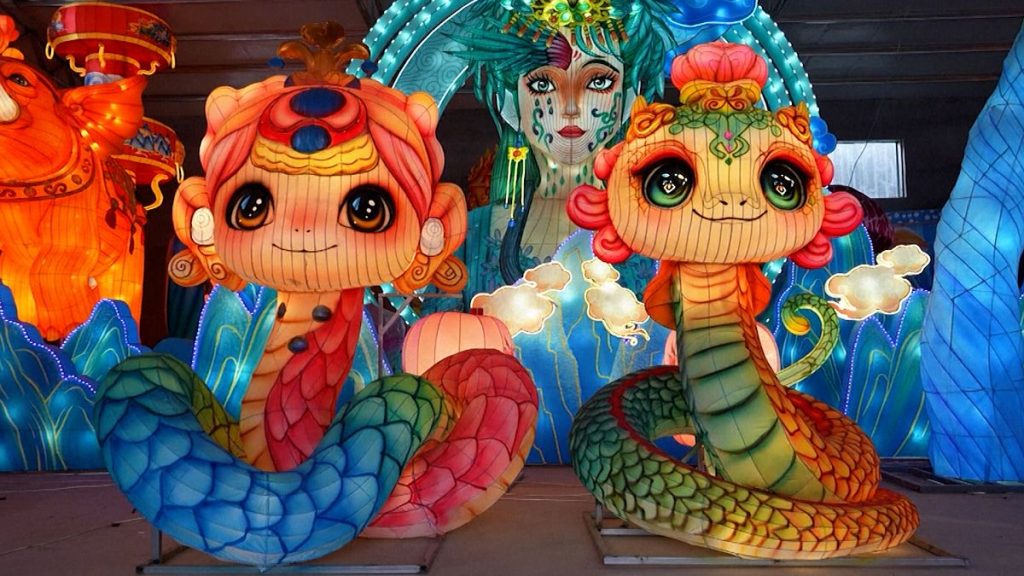The snake in Chinese culture embodies a fascinating duality, simultaneously revered and feared. While it symbolizes positive attributes like spirituality, reproduction, and longevity – echoing the creature’s shedding of skin as a metaphor for rebirth and renewal – it also carries connotations of evil, danger, and cunning. This duality likely stems from the snake’s inherent nature: its silent, swift movement, its potent venom, and its association with hidden places. Ancient myths and legends often portray snakes as powerful, enigmatic beings, capable of both great wisdom and malicious deception. This intricate interplay of positive and negative qualities creates a complex cultural understanding of the snake, making it a richly symbolic animal within the Chinese zodiac.
The celebration of the Year of the Snake presents a unique cultural challenge. While acknowledging the traditional symbolism associated with the animal, the festivities also aim to create a positive and auspicious atmosphere. This delicate balancing act leads to a nuanced approach to representation. The potentially unsettling aspects of the snake – its perceived slyness and venomous nature – are often downplayed, replaced by a focus on the more auspicious elements: its association with wisdom, healing, and transformation. This shift in emphasis allows the celebration to embrace the positive energies of the year while mitigating any negative connotations.
One key strategy employed during the Year of the Snake is the “cutification” of the reptile. Artists and designers create playful, cartoonish depictions of snakes, often resembling beloved children’s characters. This deliberate softening of the snake’s image makes it more approachable and less intimidating, especially for children. These adorable representations emphasize the snake’s playful nature, its sinuous grace, and its vibrant colors, transforming a potentially fearsome creature into a friendly and welcoming symbol of the new year. This strategic “rebranding” allows the snake to be celebrated with enthusiasm, minimizing any lingering apprehension.
This transformative approach to representing snakes during their zodiac year reflects a broader cultural trend in China. It’s a conscious effort to adapt traditional symbolism to contemporary sensibilities, making ancient beliefs more accessible and relevant to modern life. Just as the dragon, another powerful symbol in Chinese culture, has evolved from a fearsome beast to a benevolent protector, the snake undergoes a similar transformation during its zodiac year. This adaptation ensures the continuation of cultural traditions while allowing for a more positive and inclusive celebration.
The juxtaposition of the snake’s dual nature within Chinese culture highlights the dynamic and evolving relationship between humans and the natural world. The snake, in its complexity, serves as a potent reminder of the power and mystery inherent in nature. It embodies both the life-giving forces of renewal and the potential dangers lurking within the wild. By embracing the snake’s multifaceted symbolism, Chinese culture acknowledges the interconnectedness and interdependence of all living things, promoting a balanced perspective on the natural world and its inhabitants.
Ultimately, the celebration of the Year of the Snake becomes an exercise in cultural adaptation and reinterpretation. It demonstrates a remarkable ability to transform potentially negative perceptions into positive affirmations. By emphasizing the auspicious elements of the snake’s symbolism and by presenting it in a friendly and approachable manner, Chinese culture navigates the complexities of its own traditions, creating a celebration that is both meaningful and inclusive. This dynamic interplay between tradition and modernity allows the Year of the Snake to be a time of renewal, hope, and positive transformation, reflecting the very essence of the snake’s symbolic power.














